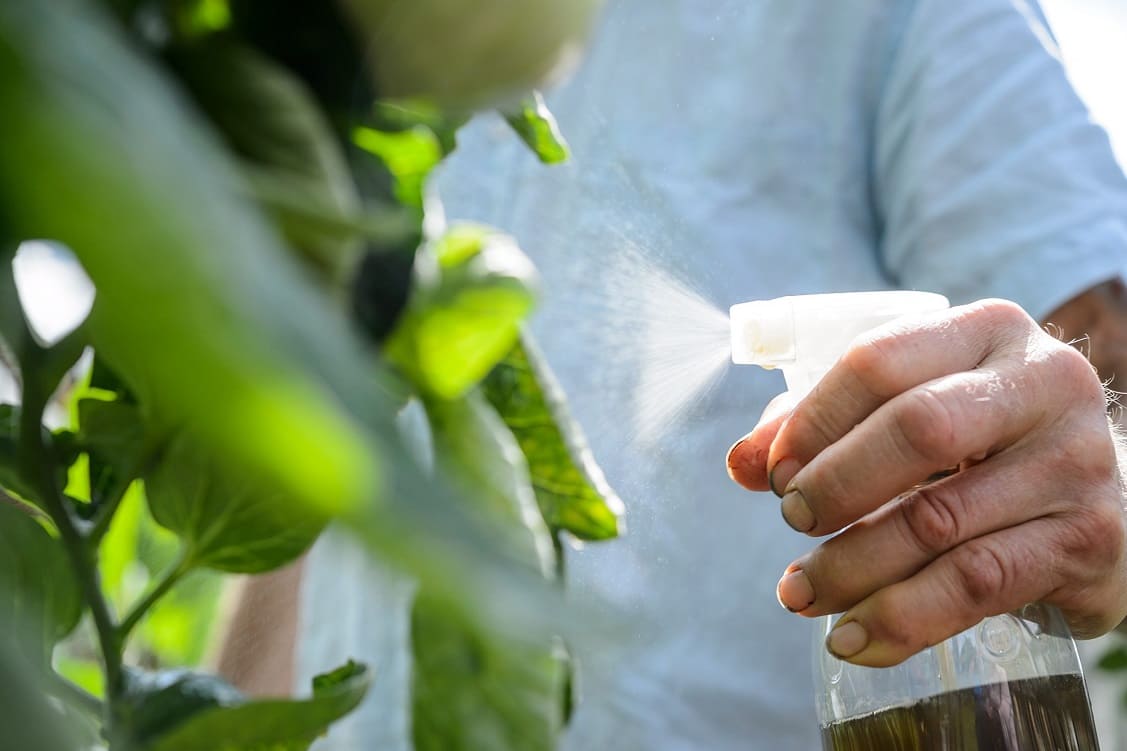Standing in my garden last spring, I watched in dismay as tiny green aphids swarmed over my prize tomato seedlings. The infestation seemed to appear overnight, turning healthy young plants into stressed, curling shadows of their former selves.
As an organic gardener, I needed a solution that would protect my plants without harming beneficial insects or contaminating my soil. That’s when I truly understood the power of insecticidal soap—a simple yet effective tool that has been saving gardens for over 200 years.
What Is Insecticidal Soap and Why Should You Care?
Insecticidal soap represents one of the safest and most environmentally responsible approaches to pest control available to gardeners today. Unlike synthetic pesticides that persist in the environment and can harm beneficial insects, insecticidal soap offers targeted control with minimal ecological impact.
True insecticidal soap consists of potassium salts of fatty acids—essentially a specially formulated soap created through a process called saponification.
When potassium hydroxide (a traditional alkali) reacts with plant or animal fats, it creates these potassium-based fatty acid salts that are remarkably effective at controlling soft-bodied insects while remaining gentle on plants and the environment.
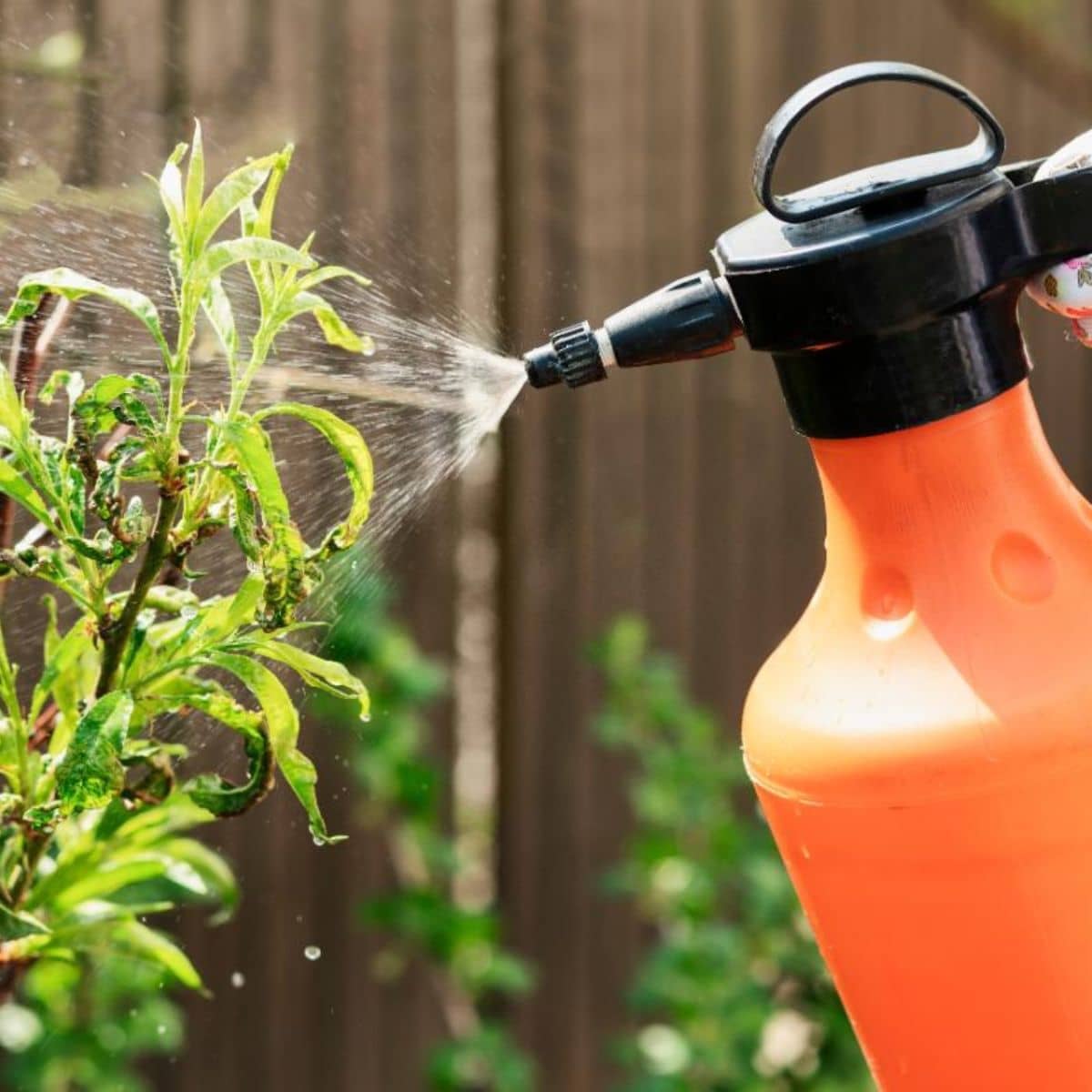
The beauty of insecticidal soap lies in its simplicity and specificity. It works through mechanical action rather than chemical toxicity, making it nearly impossible for pests to develop resistance—a growing concern with conventional pesticides.
This contact-based approach means the soap must physically touch the pest to be effective, but once it dries, it becomes completely inert and biodegrades rapidly.
The Science Behind the Suds: How Insecticidal Soap Works
Understanding how insecticidal soap eliminates pests helps explain why proper application is so crucial. The mechanism is elegantly simple yet highly effective.
When insecticidal soap contacts a soft-bodied insect, the fatty acids immediately begin breaking down the insect’s protective waxy cuticle—essentially its waterproof outer shell.
Once this barrier is compromised, the soap penetrates the insect’s cell membranes, causing them to rupture and leak their contents. This cellular disruption leads to rapid dehydration and death, typically within minutes of contact.
The effectiveness depends entirely on direct contact while the solution remains wet. Temperature plays a significant role here—warmer conditions accelerate both the soap’s action and its evaporation rate, creating a narrow window for optimal results. This explains why cooler application times consistently produce better outcomes.
Target Pests: Understanding Your Garden’s Soft Spots
Insecticidal soap excels at controlling specific types of garden pests while leaving others largely unaffected. This selectivity is actually a strength, as it preserves beneficial insects that help maintain garden balance.
The most vulnerable pests share common characteristics: soft bodies, exposed feeding positions, and limited mobility.
Aphids of all types, spider mites, whiteflies, mealybugs, thrips, and soft scale insects fall into this category. These pests typically feed on plant surfaces where soap can easily reach them, and their delicate exoskeletons offer little protection against fatty acid penetration.
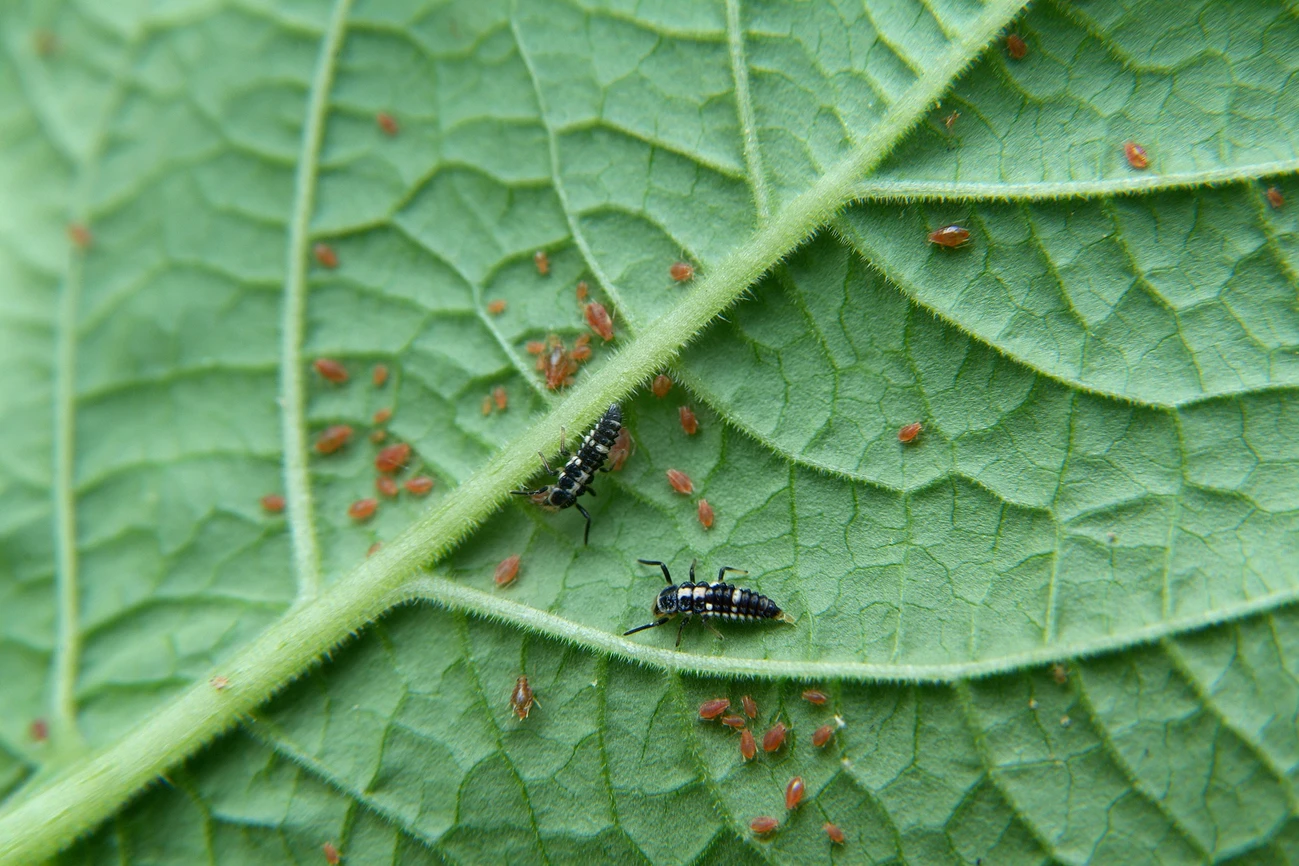
Moderately susceptible pests include young caterpillars and sawfly larvae, though success rates drop significantly as these insects mature and develop tougher cuticles. Hard-bodied beetles, mature caterpillars, and most beneficial insects like ladybugs and bees resist soap’s effects due to their protective exoskeletons and different feeding behaviors.
👉 Read the Ultimate Guide to Identifying and Controlling Tomato Hornworms in Your Garden
This selectivity means you can often treat pest problems without decimating the helpful insects that naturally control garden pests—a crucial advantage in maintaining ecological balance.
Commercial vs. Homemade: Making an Informed Choice
The decision between commercial and homemade insecticidal soap involves more than cost considerations. Plant safety, effectiveness, and consistency all factor into this choice.
Commercial Products: Engineered for Success
Commercial insecticidal soaps undergo rigorous formulation and testing to ensure optimal results. These products use precisely selected fatty acid chain lengths, typically 10-18 carbon atoms, that maximize pest control while minimizing plant damage. Shorter chains can act as herbicides, while longer chains may prove less effective against insects.
Beyond fatty acid selection, commercial products maintain proper pH levels, include stabilizers that prevent degradation, and often contain spreader-stickers that improve coverage and adherence. This engineering approach produces predictable results across different water conditions and plant types.
Most commercial concentrates cost between $15-30 but create 5-6 times more spray solution than ready-to-use bottles, making them economical for larger gardens.
The DIY Approach: Understanding the Chemistry
Creating effective homemade insecticidal soap requires understanding the fundamental difference between true soap and synthetic detergents. Most “dish soaps” are actually detergents designed to cut grease and strip oils—properties that can damage plant cuticles and disrupt natural protective barriers.
True soap results from saponification, where an alkali reacts with fats to create fatty acid salts. For insecticidal purposes, the alkali used matters significantly. Potassium hydroxide creates liquid soaps with potassium salts that are gentler on plants and more effective against insects than the sodium salts produced by sodium hydroxide.
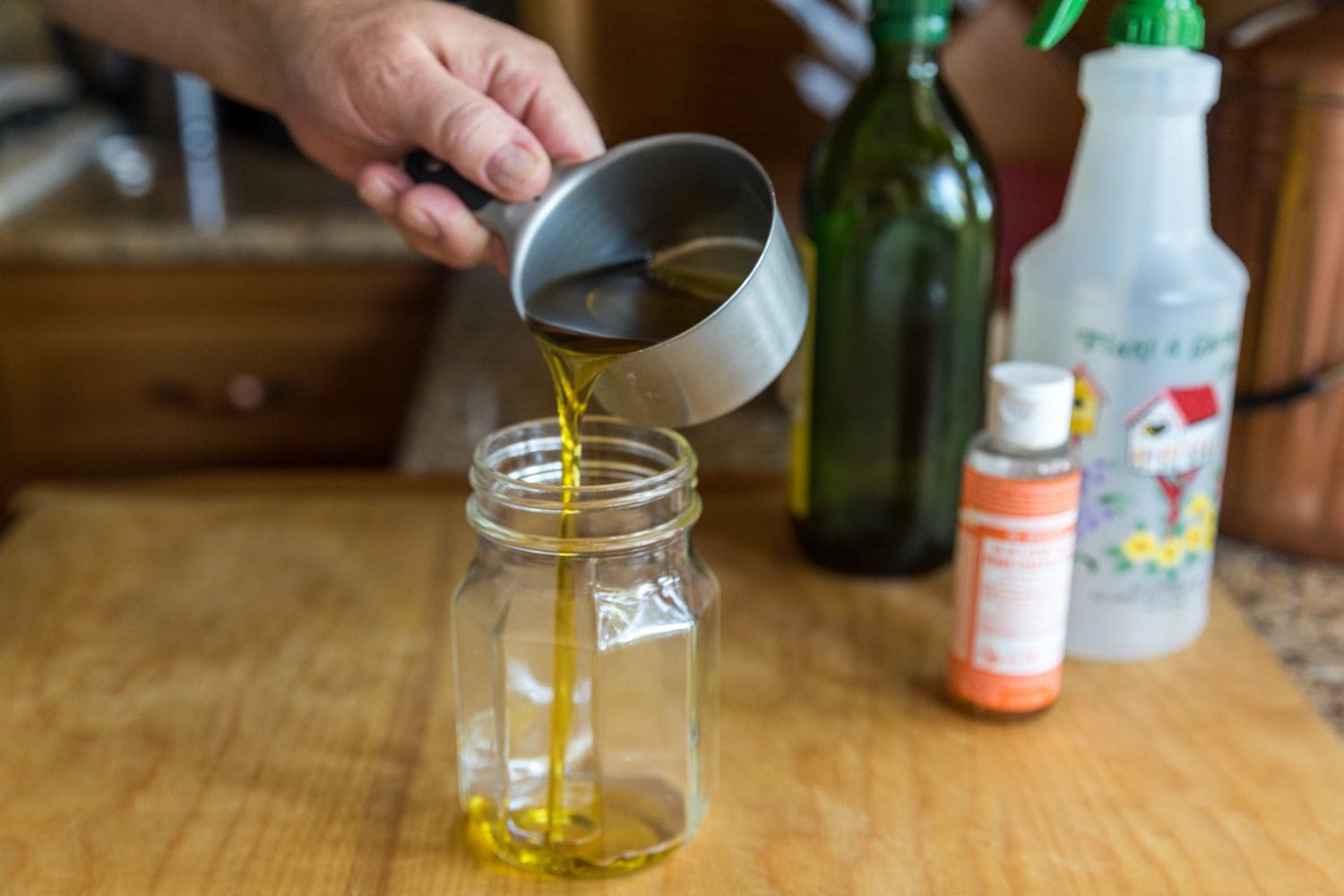
Dr. Bronner’s unscented castile soap remains the gold standard for DIY applications because it uses potassium hydroxide saponification. When mixing your own solution, use 2-3 tablespoons per gallon of soft water.
Hard water containing calcium, magnesium, or iron ions can react with soap to form insoluble precipitates, reducing effectiveness and potentially leaving residues on plants.
Water Quality: The Hidden Factor
Water quality dramatically affects soap performance, yet this crucial factor often gets overlooked. Hard water with mineral content above 300 parts per million can neutralize soap effectiveness and create problematic residues.
Test your water’s compatibility by mixing a small batch and letting it stand for 15 minutes. If scum or curds form on the surface, switch to distilled water or add a water conditioning agent.
The pH of your final solution also matters. Insecticidal soap works best in slightly alkaline conditions (pH 8-9), but solutions below pH 8 can stress plants and reduce effectiveness. Commercial products are pre-balanced, while homemade versions may require pH testing and adjustment.
Mastering Application: Precision Over Coverage
Successful insecticidal soap treatment demands strategic thinking rather than blanket application. The goal is complete pest contact, not just plant coverage.
Timing for Maximum Impact
Environmental conditions during application determine both effectiveness and plant safety. Early morning applications benefit from natural dew that keeps the solution active longer, while evening treatments avoid the stress of midday heat.
Avoid applications when temperatures exceed 90°F, as heat stress increases plant sensitivity and accelerates solution evaporation.
👉 Learn about Desert Gardening for Beginners: Growing Food & Plants in Extreme Heat
Wind conditions matter more than many gardeners realize. Even light breezes can drift spray away from target pests and onto non-target organisms. Calm conditions ensure precise application and reduce waste.
The Detective Approach to Coverage
Think like a detective hunting hidden pests rather than a painter covering surfaces. Most soft-bodied insects hide on leaf undersides, in stem crevices, and around new growth where feeding is optimal. Aphids cluster on tender shoot tips, spider mites create fine webbing on leaf undersides, and mealybugs nestle in plant joints.
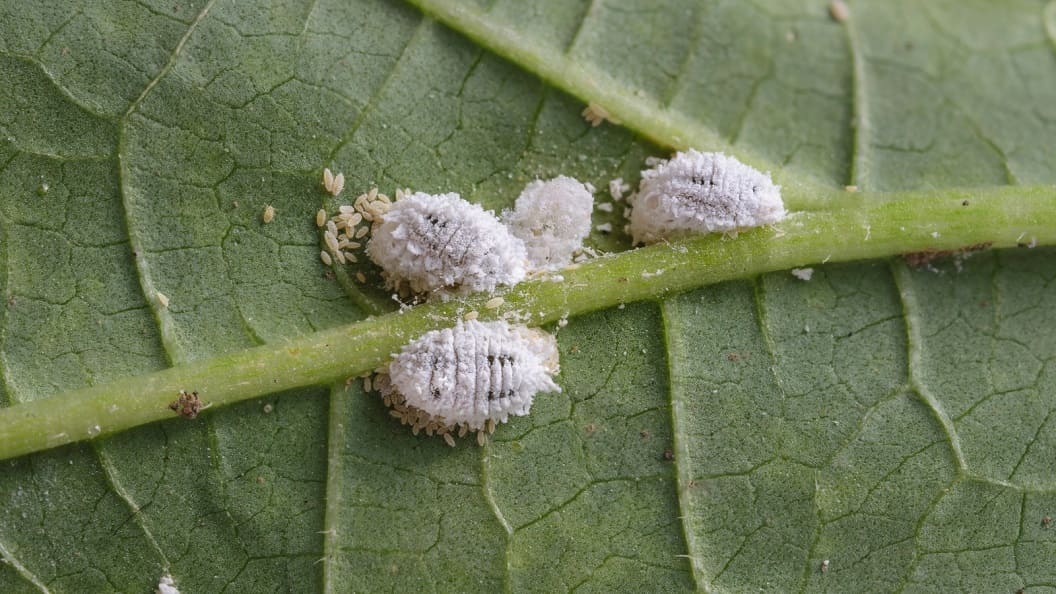
👉 Here Are 50+ Common Christmas Tree Bugs: How to Identify, Prevent, and Get Rid of Them
Use a spray bottle or applicator that produces a fine, forceful mist capable of penetrating these hiding spots. The solution should thoroughly wet target insects—they need to be drenched, not just dampened. This often requires repositioning leaves, bending stems, and approaching plants from multiple angles.
Creating an Effective Treatment Schedule
Since insecticidal soap provides no residual control, successful pest management requires strategic timing. Begin treatments immediately upon detecting pest activity, before populations explode. Follow up every 5-7 days to catch newly hatched insects that survived initial treatment.
Most pest problems require 3-4 applications spaced over 2-3 weeks. Monitor treated areas closely, as pest eggs and pupae often remain unaffected and will hatch days after treatment. Some pests, like spider mites, reproduce rapidly enough to rebuild populations within a week.
Plant Safety: Protecting Your Green Investments
While insecticidal soap is generally plant-safe, certain species, conditions, and application practices can trigger adverse reactions. Understanding these vulnerabilities prevents costly damage.
High-Risk Plants and Conditions
Several plant families show consistent sensitivity to soap applications. Sweet peas, bleeding hearts, horse chestnuts, Japanese maples, and most euphorbias (including crown of thorns) often develop leaf burn or spotting after treatment. Many ferns, especially maidenhair varieties, are equally vulnerable.
👉 Here’s How to Grow and Care for Elkhorn Fern: Easy Tips for Beginners
Beyond species sensitivity, plant condition strongly influences soap tolerance. Drought-stressed plants lack the cellular turgor needed to resist soap penetration, while recent transplants and newly rooted cuttings haven’t developed sufficient protective barriers.
Plants flowering or setting fruit also show increased sensitivity, as these energy-intensive processes leave fewer resources for damage repair.
Environmental stress compounds these risks. High humidity combined with poor air circulation can trap soap residues on leaf surfaces, while intense sunlight can concentrate soap effects and cause chemical burns. New growth on any plant tends to be more susceptible than mature foliage.
The Test Patch Protocol
Always test new applications on a small, inconspicuous area first. Apply soap solution to 2-3 leaves and wait 24-48 hours before checking for yellowing, browning, wilting, or spotting. This simple precaution can prevent widespread damage to valuable plants.
👉 Here’s How to Identify and Fix Brown Spots on Your Snake Plant
If damage occurs, rinse the affected area immediately with clean water and discontinue soap treatments. Consider alternative pest control methods or wait until plant stress factors improve before retrying with a more dilute solution.
Safety Considerations for People and Pets
Though significantly safer than synthetic pesticides, insecticidal soap still requires basic safety precautions during mixing and application. The fatty acids can irritate eyes and skin, particularly for sensitive individuals.
Wear protective eyewear and gloves during application, especially when treating overhead areas where dripping is likely. Avoid inhaling spray mist, and ensure adequate ventilation when treating indoor plants. Children and pets should remain out of treated areas until the solution dries completely.

👉 Learn about Creating a Dog-Friendly Garden: Smart Design Tips for Pet Owners
For edible crops, the safety profile is excellent. Most commercial products are approved for use up to the day of harvest, as the fatty acids break down rapidly and pose no dietary concerns. However, always rinse harvested produce thoroughly as a standard food safety practice.
Storage and Shelf Life: Maintaining Potency
Commercial insecticidal soap concentrates remain stable for 2-3 years when stored in cool, dry conditions away from direct sunlight. Once diluted, however, solutions begin degrading immediately and should be used within 24 hours for optimal effectiveness.
Homemade solutions face even shorter lifespans. The fatty acids in pure soap can become rancid, especially in warm conditions, producing off odors and reduced effectiveness. Mix only what you need for immediate use, and discard any leftover solution rather than storing it.
Temperature extremes affect both concentrated and diluted solutions. Freezing can alter soap chemistry and reduce effectiveness, while excessive heat accelerates degradation. Store concentrates in temperature-stable locations, ideally between 50-80°F.
Troubleshooting Common Challenges
Even experienced gardeners encounter challenges with insecticidal soap. Understanding common issues and their solutions prevents frustration and improves long-term success.
When pests return quickly after treatment, the problem usually stems from incomplete coverage missing hidden populations, new pests arriving from neighboring plants, or eggs hatching after treatment.
Improve coverage technique by paying special attention to leaf undersides and plant crevices. Treat surrounding areas that may harbor pest reservoirs, and extend your treatment schedule to break reproductive cycles.
White residue on leaves typically indicates hard water minerals reacting with soap or overly concentrated solutions. Switch to distilled or rainwater for mixing, reduce soap concentration, or rinse plants lightly 2-3 hours after treatment to remove excess residue.
If leaf damage occurs despite proper dilution, evaluate plant tolerance, environmental stress factors, and water quality. Some plants simply cannot tolerate soap applications, while others may need better growing conditions before treatment becomes safe.
👉 Here Are 13 Fiddle Leaf Fig Problems and How to Solve Them With Easy Fixes
Environmental Impact and Responsible Use
Insecticidal soap aligns beautifully with sustainable gardening practices while providing effective pest control. The fatty acids biodegrade rapidly in soil and water, typically within days of application, preventing accumulation and long-term environmental contamination.
When applied correctly, soap poses minimal risk to beneficial insects, birds, mammals, and aquatic life. The key lies in avoiding direct contact during application and timing treatments when beneficial insects are less active.
Never spray flowering plants when bees or butterflies are present, and avoid applications near water sources where concentrated soap could harm aquatic organisms.
Soil health remains unaffected by soap applications, as the fatty acids don’t disrupt beneficial microorganisms or earthworm populations that maintain healthy soil structure. This stands in stark contrast to synthetic pesticides that can persist in soil for months or years.
Advanced Integration Strategies
Experienced gardeners often combine insecticidal soap with other organic methods for enhanced effectiveness and reduced reliance on any single control method.
Strategic timing can maximize soap’s impact within an integrated pest management approach. Use soap early in the growing season to prevent pest establishment, then rely more heavily on beneficial insects as their populations build.
Alternate weekly applications with neem oil—soap for immediate knockdown, neem for longer-term control and growth regulation.
Consider combining soap treatments with physical controls like row covers, reflective mulches, or trap crops for comprehensive pest management. Release beneficial insects like ladybugs or lacewings after using soap to reduce pest populations, giving these natural predators a better chance to establish control.

👉 Here’s How to Attract Praying Mantises for Natural Pest Control in Your Garden
Recognizing When Alternatives Are Better
Despite its many advantages, insecticidal soap isn’t always the best choice for every pest situation. Severe infestations may require stronger interventions before soap can be effective, while hard-bodied pests like beetles and mature caterpillars need different control strategies entirely.
Some valuable or irreplaceable plants may be too sensitive to risk soap treatment, particularly during stressful environmental conditions. Extended periods of hot, humid weather increase the risk of plant damage and may warrant postponing soap applications until conditions improve.
Alternative approaches include releasing beneficial insects for long-term control, using physical barriers like row covers for prevention, implementing cultural controls through proper spacing and sanitation, or applying targeted organic treatments like Bacillus thuringiensis for caterpillars or diatomaceous earth for crawling insects.
The Path to Pest Control Success
Mastering insecticidal soap requires understanding its strengths and limitations while applying it thoughtfully within a broader garden management strategy.
Success comes from thorough pest contact rather than extensive plant coverage, proper timing that considers both environmental conditions and plant stress levels, and realistic expectations about what soap can and cannot achieve.
Remember that effective organic gardening emphasizes prevention and balance over reactive treatments. While insecticidal soap provides an excellent tool for managing pest outbreaks, the healthiest gardens combine multiple strategies to create environments where pest problems rarely require intervention.
As I learned that spring morning with my aphid-infested tomatoes, insecticidal soap isn’t just about killing pests—it’s about restoring balance to your garden ecosystem. When applied with knowledge and care, this simple solution becomes a powerful ally in creating the healthy, productive garden every organic grower desires.
The key lies not in the spray bottle itself, but in understanding the science, respecting the plants, and working with nature’s own mechanisms to achieve lasting pest control.
Start with a commercial product for your first applications to build confidence and understand how your plants respond. Once you’ve mastered the techniques and timing, you can experiment with DIY solutions if desired.
Remember, successful organic gardening rewards patience, observation, and working with natural processes—insecticidal soap is simply one valuable tool in that larger toolkit.
